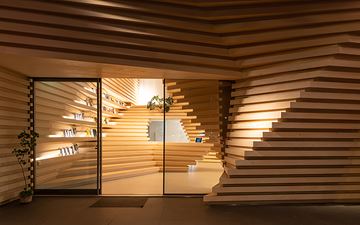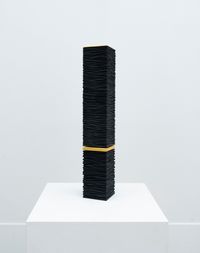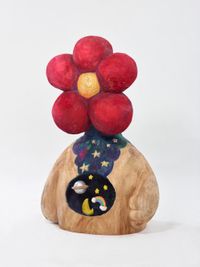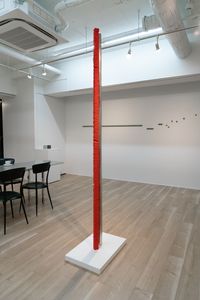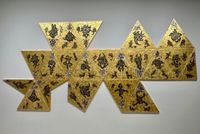Established in 1967, Whitestone Gallery is a leading Japanese gallery presenting a broad spectrum of Japanese art from the post-war to contemporary in spaces across East Asia.
Read MoreFirst opening in central Tokyo, the gallery was well placed to participate in Tokyo’s post-war, modern artistic revival. Since the late 1970s, Whitestone Gallery has operated in Tokyo’s affluent neighbourhood of Ginza, where it now has two spaces.
Over the past decade, Whitestone Gallery has rapidly expanded its influence on Asian art. In 2012, the gallery established and became the parent organisation of Karuizawa New Art Museum, a private museum in one of Japan’s most popular resort towns.
In 2015 and 2016 consecutively, Whitestone Gallery opened two new spaces in Hong Kong, which were merged in 2018 in a two-floor exhibition space in the H Queen’s art complex. In 2017, the gallery took another major step to building broader regional connections with a new space in Taipei.
While expanding to an international stage, the gallery remains dedicated first and foremost to Japanese talent.
Whitestone Gallery Artists
Taking a pioneering role in the Japanese art scene for over 50 years, Whitestone Gallery boasts a diverse roster of Japanese artists spanning several generations.
Among them are key figures of Japan’s iconic post-war Gutai movement (1954–1972), including the founding member and mentor Jiro Yoshihara, and younger artists under his wings such as Japanese action painting pioneer Kazuo Shiraga, kinetic art pioneer Yutaka Matsuda, and Atsuko Tanaka, known for her Electic Dress (1956) work.
Whitestone Gallery also represents other key Japanese post-war figures such as Yayoi Kusama, the world-renowned creator of surreal pop art sculpture and installations, and Korean-born painter and important figure in the development of the Japanese Mono-ha movement, Lee Ufan and Ay-O, a prominent Japanese figure of the international experimental art group Fluxus.
While presenting Japan’s rich post-war modernist canon, Whitestone Gallery continues to foster Japanese contemporary art, representing established names such as Tetsuo Mizù, whose maritime flag-inspired abstract works have received international recognition, and leading Japanese modern ceramicist Toshio Ohi, alongside emerging artists like Miwa Komatsu, whose copperplate engravings and paintings engage uniquely with the beauty of death.
Expanding its roster to open up broader regional and international art dialogues, Whitestone Gallery also represents an international contingent of contemporary artists, including pioneering American glass artist Dale Chihuly, celebrated British sculptor Julian Opie, American graffitist turned pop artist and designer, KAWS; and younger emerging Dutch artist Florentijn Hofman, known for his oversized toys and other quotidian objects.
Whitestone Gallery Exhibitions and Art Fairs
Over the past 50 years, Whitestone Gallery has held group and solo exhibitions presenting the work of major Japanese artists to a wide audience, and bringing attention to emerging talent.
Showing its ongoing support for Japanese contemporary art, the gallery marked its 50th anniversary in the Ginza New Gallery and the brand new Taipei gallery with shows by emerging artist Miwa Komatsu.
Representing its artists across the globe, Whitestone Gallery participates in numerous international and regional art fairs including Art Taipei, Art Moscow, The Armory Show, Korean International Art Fair, Fine Art Asia, Expo Chicago, Art Stage Singapore, Masterpiece London, ART021 Shanghai Contemporary Art Fair, Art Cologne, Art Central, Taipei Dangdai, and Sydney Contemporary.
